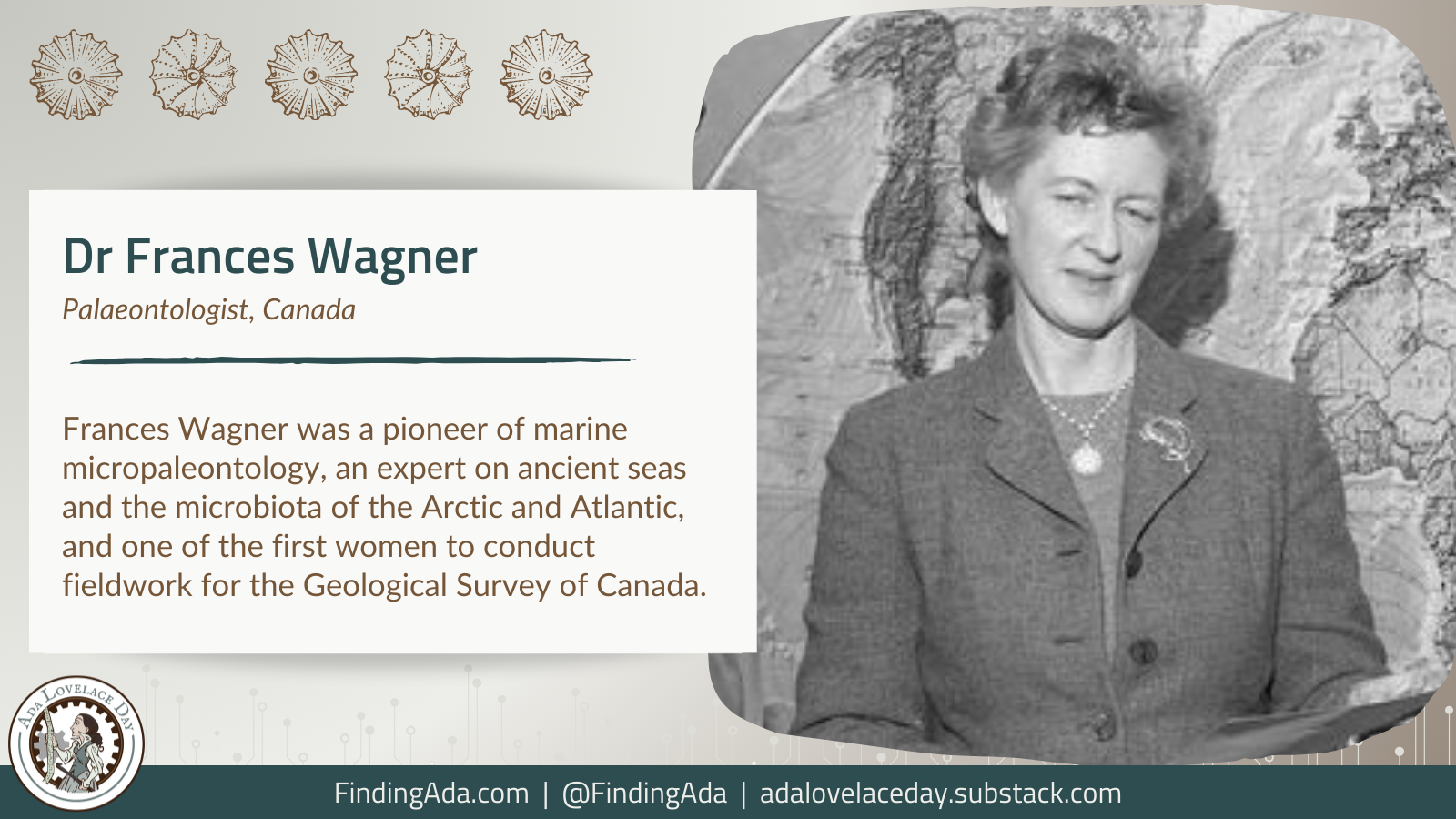Dr Frances Wagner
Dr Frances Wagner was a Canadian palaeontologist and one of the first female scientists to carry out field research for the Geological Survey of Canada (GCS). Over the course of a long career, she became a distinguished expert in the use of micropaleontology – the study of microscopic fossils – to study marine geology.
Wagner was born into an outdoorsy family in Hamilton, Ontario, in 1927. Her parents had a holiday cottage in Muskoka in the Canadian Shield, a region notable for its exposed precambrian rocks, and Wagner’s love of nature was sparked by a childhood spent learning about the area’s flora, fauna and geology. She studied palaeontology during her bachelor’s degree at the University of Toronto before embarking on a master’s in invertebrate palaeontology. Her MSc research, conducted at an Ordovician limestone sequence near Ottawa, was the start of a lifetime’s delight in field studies.
Halfway through her master’s, Wagner was hired by the GSC – Canada’s national organisation for geoscientific information and research – to catalogue fossil samples. She started working full-time for the GSC on her 23rd birthday in May 1950, becoming only the third female research scientist to do so. At the time, women were not generally considered physically or mentally strong enough to take part in geobiological field research. Wagner disproved this view during her first field excursion, which saw her travel by canoe to the remote Moose Factory Island in northeastern Ontario.
After a year in the field, Wagner went to Stanford University, earning her PhD in micropaleontology in 1954. The study of tiny remains of animals, plants and single-celled organisms in order to unlock the secrets of biogeological evolution, micropaleontology continues to inform modern-day resource development, including in the hydrocarbon industry. Wagner’s specialism was marine micropalaeontology. Over the course of countless expeditions, she became an expert on ancient seas in Canada and the microbiota of the Arctic and Atlantic continental shelves, with her fieldwork taking her to the Caribbean and the Canadian Maritimes.
Aged 40, Wagner moved to Nova Scotia to work at the esteemed Bedford Institute Laboratory (now the Bedford Institute of Oceanography), where she spent many years. From late 1969, she studied microorganisms from the CSS Hudson – a new research vessel and the first ship to circumnavigate the Americas – for almost a year as it travelled the treacherous Northwest Passage. She was elected as a Fellow of the Royal Canadian Geographical Society in 1973, in recognition of her achievements and scientific research.
In 1979, Wagner co-authored a definitive study on the holocene marine environment of the Beaufort Shelf, helping to illuminate how even small interferences with natural processes – such as those caused by hydrocarbon drilling – can cause profound disturbances in Canadian Arctic waters. Five years later, after a career defined by countless field investigations, she retired from the GSC. She died on 8 November 2016 in Falmouth, Nova Scotia, aged 89.
Further Reading
- Frances Wagner, Wikipedia
- Frances Wagner, Brigid Christison, Trowelblazers, 29 September 2020
- Dr. Frances Wagner: Adventurous micropaleontologist flouted convention, Bill Atkinson, The Globe and Mail, 7 December 2016
Written by Moya Crockett, with thanks to Stylist for their support.
